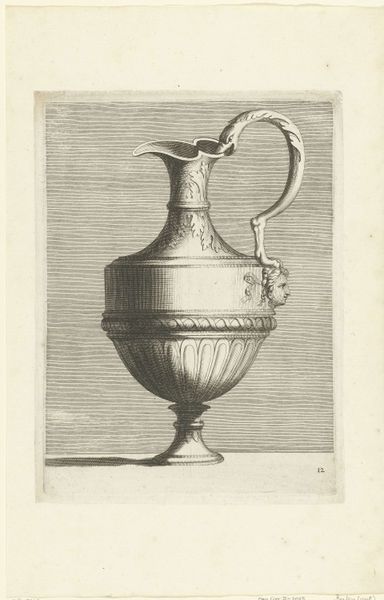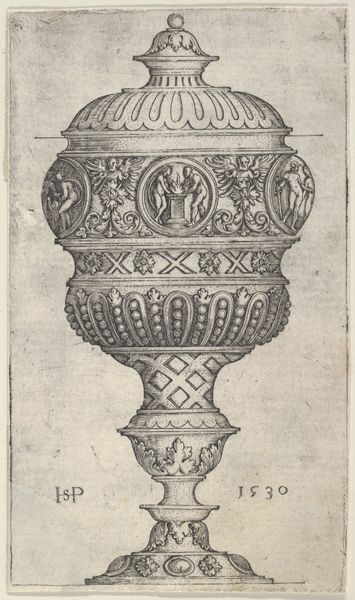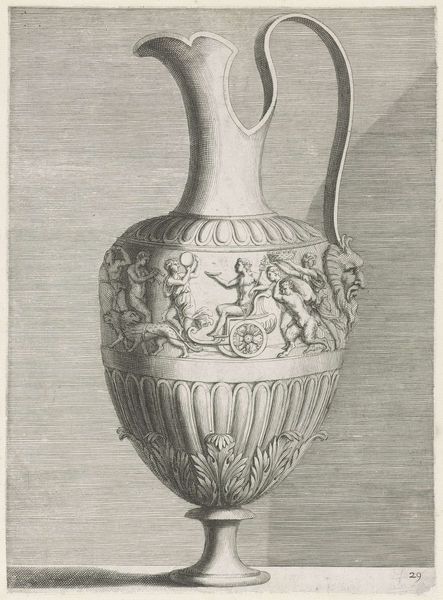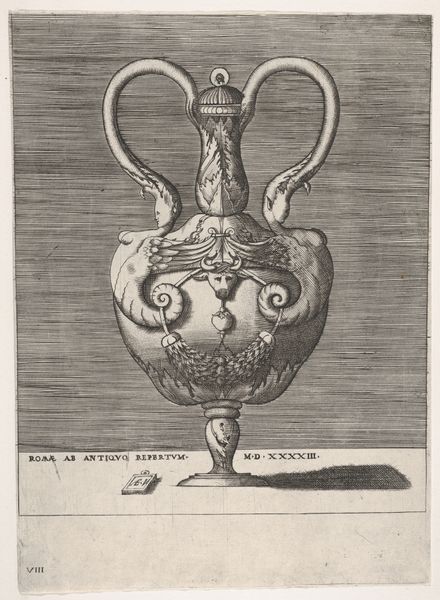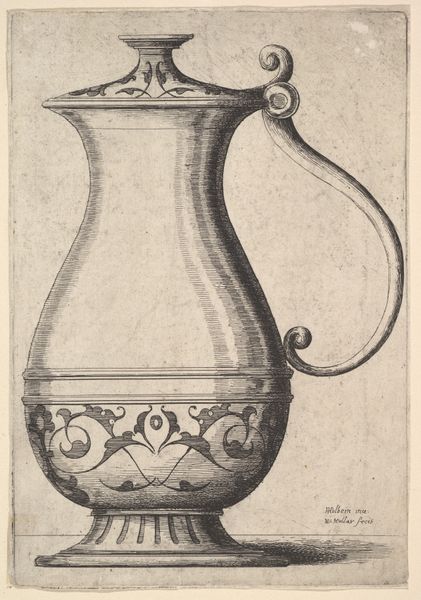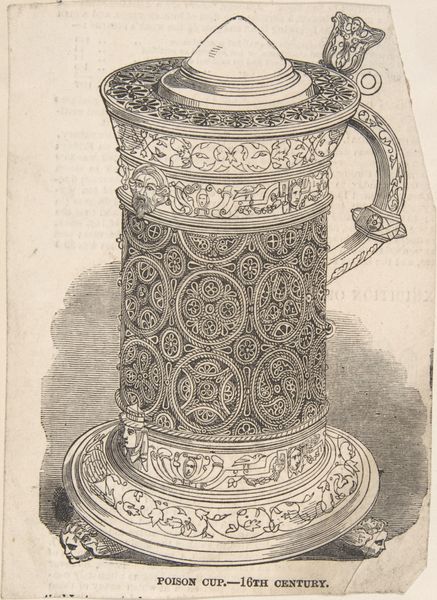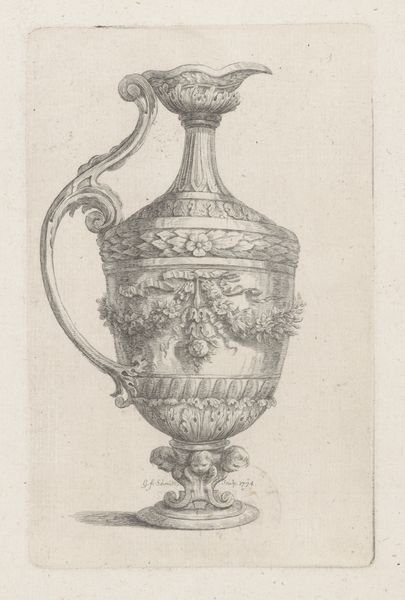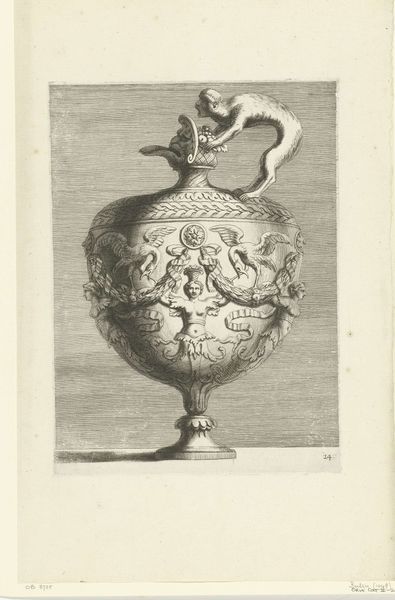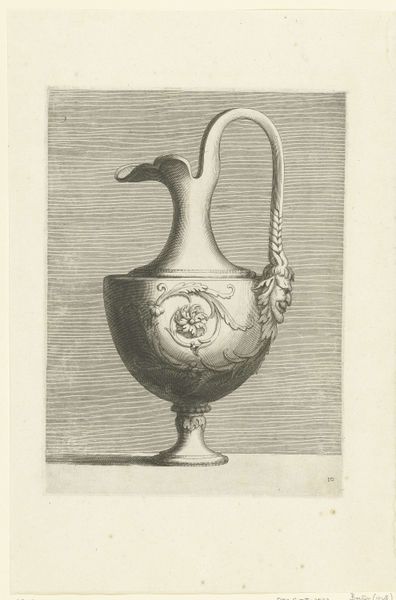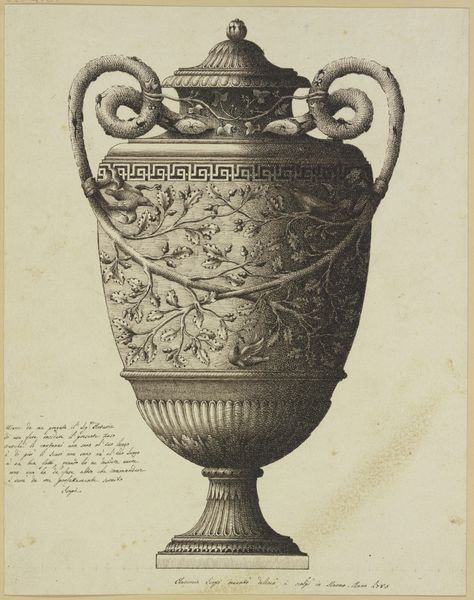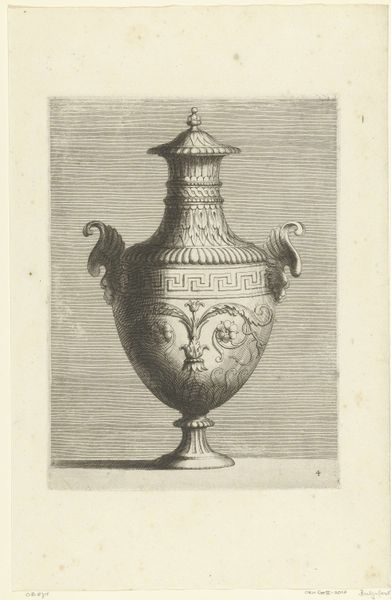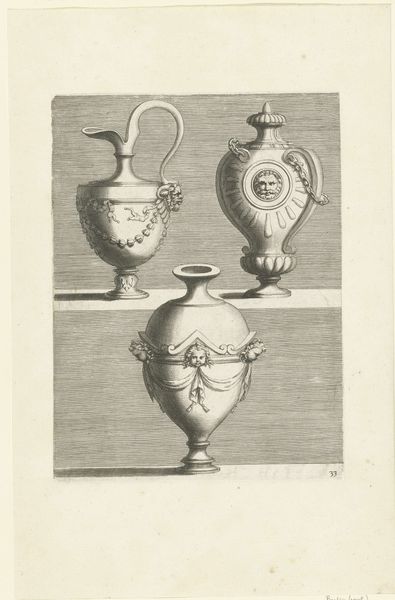
drawing, print, metal, engraving
#
drawing
#
baroque
# print
#
metal
#
geometric
#
line
#
decorative-art
#
engraving
Dimensions: Plate: 6 1/8 × 4 1/2 in. (15.5 × 11.4 cm) Sheet: 6 1/4 × 4 9/16 in. (15.8 × 11.6 cm)
Copyright: Public Domain
Editor: This is Wenceslaus Hollar's "Jug decorated with arabesques," made in 1645. It's an engraving. I'm struck by how meticulously the design covers the jug; it's so ornate! What do you see in this piece? Curator: The abundance of detail, characteristic of Baroque art, immediately draws my eye as well. But I see this image existing at a fascinating intersection of cultural exchange and representation. Hollar, working in a European context, is depicting a jug adorned with arabesques, motifs deeply rooted in Islamic art. How do we understand his engagement with these forms? Editor: So, it’s not just a pretty drawing of a jug? Curator: Not at all! Consider the historical context: 1645. Europe was deeply engaged in trade and, often, conflict with the Ottoman Empire and other Islamic regions. Objects like this jug weren't just commodities; they were imbued with cultural and political meaning. The "arabesques" weren’t just decorative; they signaled "otherness," luxury, and a connection to powerful, sometimes threatening, empires. Editor: That makes sense. It’s like Hollar is capturing a specific relationship between cultures. Was he exoticizing Islamic art? Curator: It's definitely a valid question. One could argue that by isolating these arabesques onto a European object, Hollar both acknowledges and potentially domesticates the "foreignness". Is it an appropriation? A celebration? It's a dialogue worth unpacking. What do you think about the effect of limiting himself to line art here? Editor: It seems that the precise linework emphasizes control and perhaps, distance, in relation to the source material. I am also reminded how ubiquitous similar designs have become in a wide range of contexts in our current moment. Curator: Precisely. It underscores how objects can become potent symbols of power dynamics. We see something decorative, but with a bit of historical probing, it reveals a complex web of cultural interactions.
Comments
No comments
Be the first to comment and join the conversation on the ultimate creative platform.
